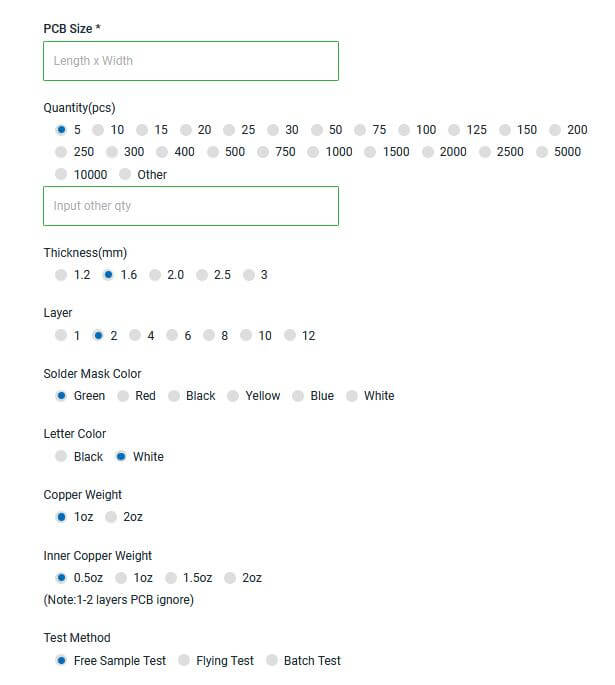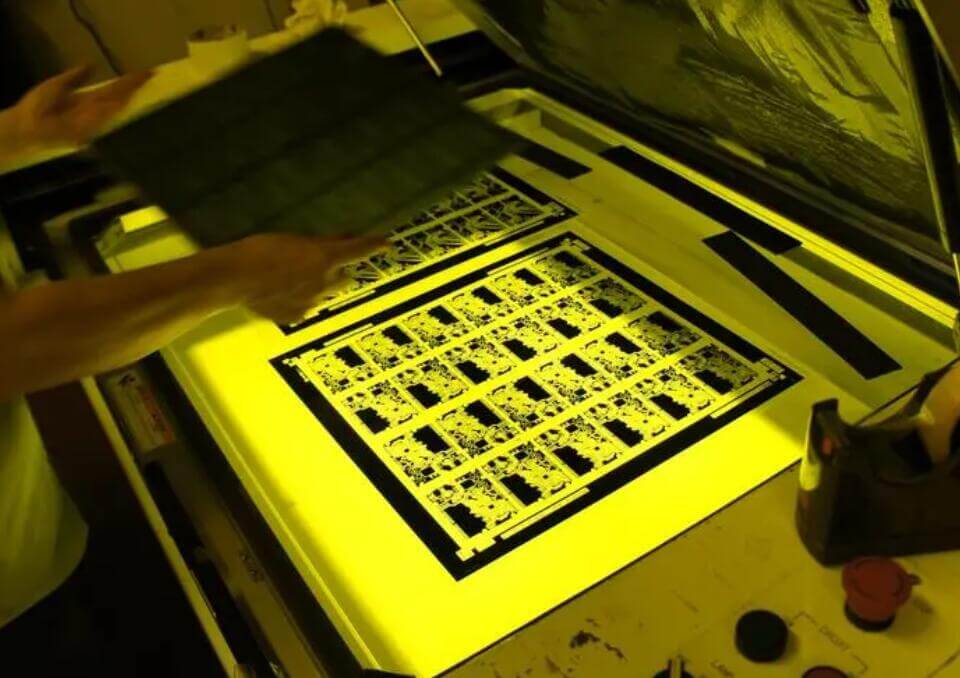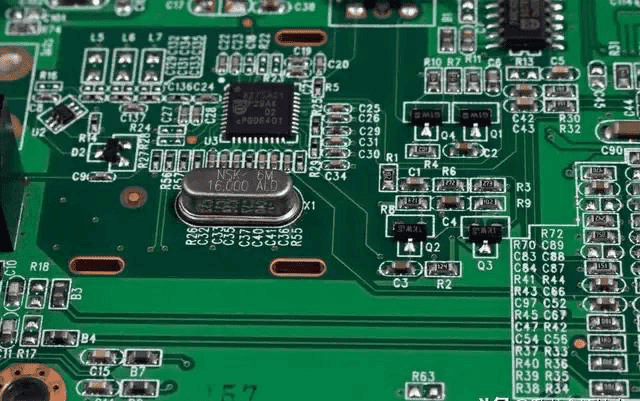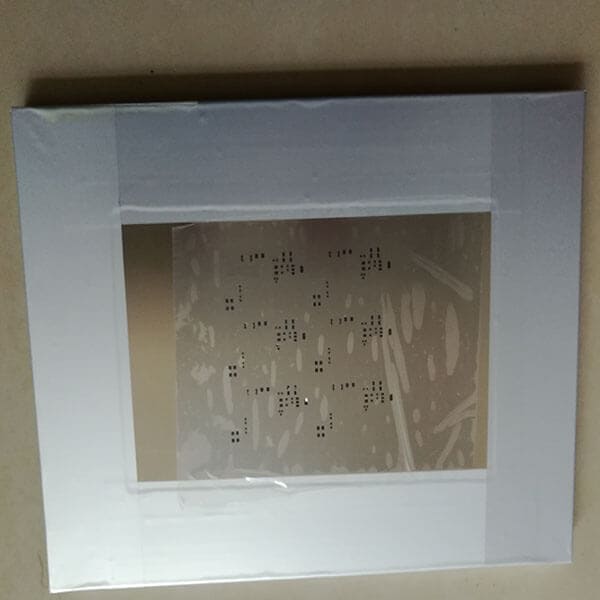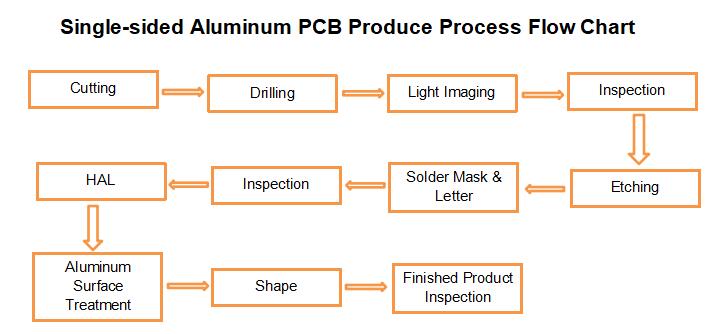The company uses dry film in the PCB production process, combined with various problems and solutions in production. This article introduces the characteristics and application technology of dry film for your reference.
Composition of Dry Film
Dry film consists of the following parts
- Polyester cover film: It is a carrier of photosensitive emulsion with a thickness of 1mil, which can isolate oxygen and peel off after exposure. (high temperature resistant)
- Photoresist Film: 1.5mil thick photosensitive emulsion, dry film main body.
- Polyethylene Film: The thickness is 1mil to prevent the dry film from sticking to each other when it is rolled and peeling off when it is pasted.
Composition of photosensitive emulsion
- Binder: The main component of dry film, which is the carrier of other components, and has certain “rigidity” without excessive “dispersion” of film body. It mainly affects the characteristics of development and film removal (solvent type or water-soluble type). Dry films made of different binders can be divided into water-soluble, semi water-soluble or solvent dry films.
- Photosensitizer: At the initial stage of photosensitive polymerization, the “light energy” of the appropriate wavelength light emitted by the light source is “activated”. The photosensitizer will split itself and release “free radicals”, which will trigger the subsequent photosensitive polymerization process.
- Monomer: An important element in the process of photosensitive polymerization. During the exposure process, the monomer will react with the previous “free radical”, and then start a series of transfer polymerization (or cross-linking reaction)
- Plasticizer and adhesion promoter: The purpose of the two additives is to enhance the flexibility of the dry film and the adhesion or grip with the copper surface.
- Dyes: There are two purposes. One is to facilitate the inspection of the dry film itself during manufacturing; the other is to facilitate the visual inspection when making graphics. The most common colors are red, blue, green, purple and so on. Different dye series can be divided into two types: photosensitive color enhancement and fading after photosensitivity.
Dry Film Process Flow
1. Flow Chart
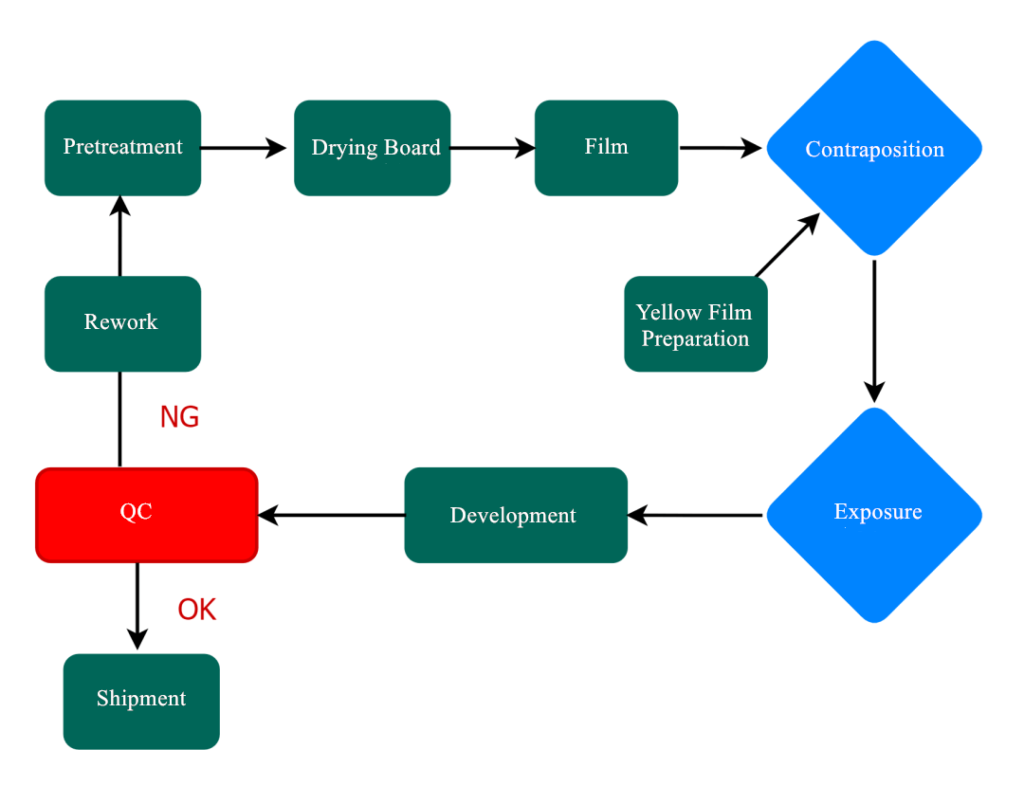
2. Process Principle
Pickling: Use H2SO4 to remove the oxidation of the plate surface and clean the plate surface.
Grinding plate: Uniformly roughen the plate surface and remove the plate sundries to improve the bonding force between the dry film and the copper surface.
Drying plate: Keep the plate surface temperature at a certain value before coating to ensure the close combination of copper surface and dry film.
Film sticking: Stick the dry film on the copper surface after cleaning and roughening under a certain temperature and pressure.
Alignment: Align and overlap the holes corresponding to the plate surface through the yellow film negative, so as to complete the transfer of line graphics.
Exposure: Use UV energy to select sexy light for the dry film, and completely transfer the line pattern on the film to the board surface pasted with the dry film.
Development: Dissolve and remove the non photosensitive part of the dry film with a certain concentration of Na2CO3 (K2CO3) solution to obtain the required circuit pattern.
Working environment requirements
Temperature: 20 ± 3 ℃; Relative humidity: 50-70%
Environmental requirements of purification room: According to different product grades, the environmental requirements of purification room are also different (≤ 10000, ≤ 100000, etc.).
Lighting: Yellow light or white light without UV light is used for the lighting of the working area.
Test Method
Wear mark test
Wear mark test of needle roller grinding machine
- Turn on the machine without opening the grinding brush, and put a double-sided copper clad laminate. Dry it under the grinding brush required for testing.
- Start the grinding brush for about 3-5 seconds and turn off the grinding brush.
- Repeat steps 1 and 2 to test the wear marks of the four grinding brushes.
- Check the wear mark. The width of the wear mark is required to be 12-18mm (the width difference is acceptable within 5mm), and 0.5 at both ends is not included.
- All circulating pumps need to be started for the above operations, and the grinding brush swing cannot be started.
Water film rupture test
Put a ground plate into clean water, then stand the plate at an angle of 45-90 degrees, and observe the time when the water film evenly stays on the plate surface.
Exposure energy measurement
- Attach two exposure rulers to the appropriate transparent place on the diazo film. (the company’s current exposure ruler is stouffer21step)
- Attach diazo tablets to the test plate with dry film attached (one on both sides of the test plate).
- Put it into the exposure machine and vacuum exposure. After exposure to light, it needs to stand for at least 15 minutes before development.
- The transparent or yellowish grid after development is the number of exposure energy grids of the test plate (there are two readings, i.e. cover film and exposed copper, with a difference of one level).
Developing Point Test
When the pump is dry, place the developing plate in the position of the developing plate in the middle of the developing chamber, and continue to paste it out of the developing plate according to the exposure of the developing plate. “Developing point” refers to the percentage of the distance from the exposed copper point to the starting end of the developing chamber in the length of the whole developing chamber.
Common Problems and Solutions
| Working procedure | Question | Cause | Solutions |
Grinding plate |
Oxidation | 1. The circulating water is too dirty | Replace the circulating water and clean the water tank |
2. The absorbent sponge reel is too dirty | Clean or replace the absorbent sponge reel | ||
3. Low drying temperature | Check drying temperature | ||
4. Transmission is too fast
| Adjust transmission speed | ||
| 5. Insufficient pickling concentration | Test the acid concentration and add | ||
Sticking film
| Film wrinkling | 1. Upper and lower dry film asymmetry | Align the upper and lower dry films again |
| 2.Uneven roller temperature distribution | Measure the roller temperature and calibrate it | ||
| 3.Uneven pressure | Inform maintenance and adjustment | ||
| Film throwing | 1. Insufficient pressure | Adjust air pressure | |
| 2. The temperature is not enough or too high | Adjust temperature | ||
| 3. The transmission speed is too fast | Adjust speed | ||
| Exposure | Pool exposure | 1. Poor vacuum pumping | Increase the vacuum pressure and manually assist in purging |
| 2. The exposure energy is too high or insufficient | Redo the exposure ruler or adjust the exposure energy | ||
3. The optical density of yellow film cannot meet the requirements
| Check the optical density of the yellow film or repeat the yellow film | ||
Development |
Overdevelopment | 1. The developing point is too low | Readjust the developing point |
| 2. The temperature of liquid medicine is too high | Turn on the cooling system to cool down | ||
| 3. The concentration of liquid medicine is too high | Adjust the concentration of liquid medicine according to the test sheet | ||
| 4. Excessive developing pressure | Readjust the developing pressure | ||
| Unclean development | 1. The developing point is too high | Readjust the developing point
| |
| 2. The liquid medicine temperature is too low | Heat the developer to the range required by the process and then develop it | ||
| 3. Insufficient concentration of liquid medicine | Add developer solution according to the test results to the process scope | ||
| 4. Too many developing boards | Replace with new liquid medicine and control the number of developing plates | ||
| 5. Nozzle blockage | Check whether the nozzle is blocked and dredged |

